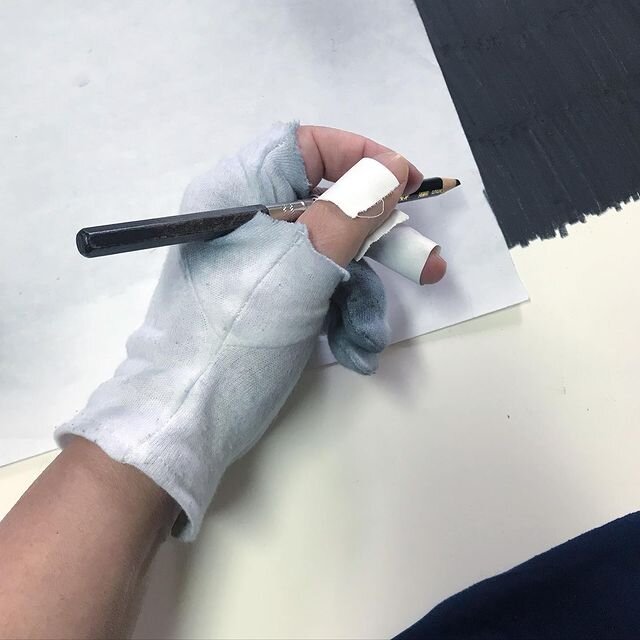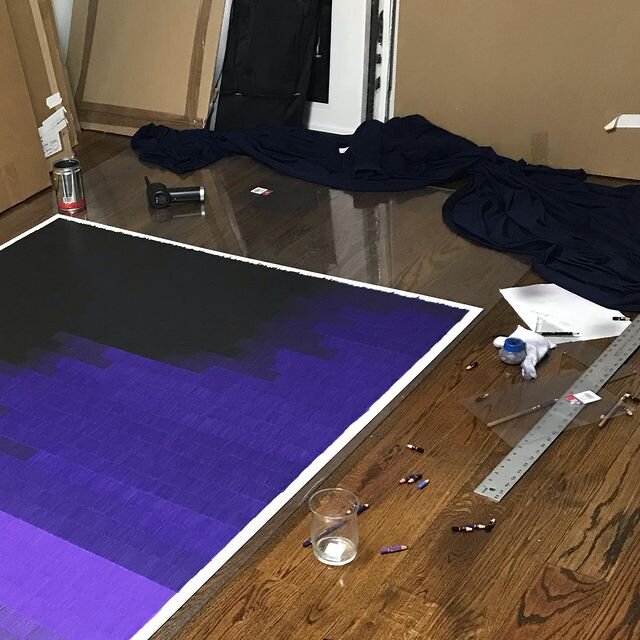Thoughts on a line
by Re’al Christian
A line can be at once simple and complex: a familiar way to chart progress—a continuum of time, a tally, a benchmark, a graph—or a fundamental component of an entirely new form. A line can become a gesture, a shape, a landscape. The part represents the whole, but the whole can be something entirely different, or a summation of its component parts. Reducing forms to their individual lines reveals an inherent complexity—the potential of elemental parts to grow, generate, and expand. Through her continuous articulation of the line, Zipora Fried presents an ecological energy between surface and hand. Her pigments build, cascade, and fade through the simple adjustment of the intensity of her gesture. It is a process of endurance. Nothing is lost in this process, and nothing is hidden. The heavier the line, the more energy that is expended and transferred from the artist to the surface. This flow of energy is a constant negotiation; in short, it represents the simultaneous making and unmaking of the artwork and its creator.
Fried’s recent body of work is comprised of monumental compositions punctuated by rich, radiant shades of blue. Works such as A Terrible and Beautiful Thing and Lost and Found Souls (both 2021), call to mind the “blue savannahs of memory” described by Édouard Glissant—a massive expanse of water, the depths of the abyss, or an oceanic barrier between time and space. The heavy greens that intersect with rippling blacks conjure the fluid passage between land and sea, or the relationship between water and root. In a series of pieces entitled There Is No Lie in This (2020), dark neutrals blend harmoniously, while brighter hues seem to vibrate off the surface. There is a tension between the pigments as they come into contact with one another that suggests a lack of harmony, perhaps the scars of a disrupted landscape, a chemical imbalance, interpersonal angst, or divergent sounds reverberating through a singular space. In this struggle to adhere to the same conterminous plane, the deep, undulating blues reconnect these disparate forms, grounding the cacophonous rhythms of color into a coherent body. In this progression, we bear witness to an ecological flow, a process of give and take, loss and gain between constituent parts. A line, like any medium, is a constituent. Through order and disorder, making and unmaking, Fried’s lines build and grow into something else, something complex, something new. Together, they comprise their own environment—a ruptured ecosystem slowly coming to terms with itself.
About the author:
Re'al Christian [REE-AL] is a writer and art historian based in Queens, NY. Her work has appeared in Art in America, ART PAPERS, Art in Print, BOMB Magazine, and The Brooklyn Rail. She is an MA candidate in Art History at Hunter College, and holds a bachelor’s degree in Art History and Media, Culture, & Communication from New York University.


